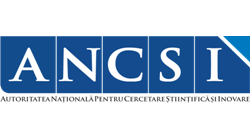
The HeartMed Project#
The translational HeartMed project aims to combine (pre-)clinical data from multiple experimental studies for improving patient-specific diagnosis and enabling clinical decision-making in cardiovascular medicine. The HeartMed project is a scientific collaboration between:
- Charité - Universitätsmedizin Berlin, Germany;
- Luxembourg Centre for Systems Biomedicine, University of Luxembourg, Luxembourg (LCSB);
- Max Delbrück Center for Molecular Medicine in the Helmholtz Association, Germany (MDC); and
- Siemens SRL Romania.
Cardiomap - MINERVA platform#
The Cardiomap represents a collection of manually-curated metabolic and signaling pathways important for understanding different phenotypes of heart failure. The cardiomap can be visualised using the Molecular Interaction NEtwoRk VisuAlization (Gawron et al.2016). At metabolic level, we incorporated and manually-annotated information available in the manually-curated cardio-specific metabolic map, which comprises glycogen metabolism, glycolysis, triglyceride synthesis, synthesis and degradation of lipid droplet, tricarbonic acid cycle, respiratory chain, oxidative phosphorylation as well as β-oxidation of fatty acids (Berndt et al. 2021). At signaling level, we focused on pathological and physiological hypertrophy due to its crucial impact on heart failure development and manually-curated highly qualitative and recent relevant publications (e.g Mishra et al. 2021; Oldfield et al. 2020; Nakamura et al. 2018).
Access:#
HeartMed publications:#
- Berndt N. et al. CARDIOKIN1: Computational Assessment of Myocardial Metabolic Capability in Healthy Controls and Patients With Valve Diseases. Circulation. 2021, 144(24):1926-1939; doi: 10.1161/CIRCULATIONAHA.121.055646.
- Ciusdel C.F. et al. Normalizing Flows for Out-of-Distribution Detection: Application to Coronary Artery Segmentation. Appl. Sci. 2022, 12(8), 3839; doi: 10.3390/app12083839.
- Samuelsson A-M et al. VEGF-B hypertrophy predisposes to transition from diastolic to systolic heart failure in hypertensive rats. Cardiovasc Res. 2023 Mar 23; doi: 10.1093/cvr/cvad040. Online ahead of print.
Selected references for the cardiomap:#
- Mishra S. & Kass D.A. Cellular and molecular pathobiology of heart failure with preserved ejection fraction. Nat Rev Cardiol 18, 400–423 (2021).
- Oldfield C. J., Duhamel T.A. & Dhalla N.S. Mechanisms for the transition from physiological to pathological cardiac hypertrophy. Can J Physiol Pharmacol 98, 74–84 (2020).
- Nakamura M. & Sadoshima J. Mechanisms of physiological and pathological cardiac hypertrophy. Nat Rev Cardiol 15, 387–407 (2018).
- Gawron P. et al. MINERVA-a platform for visualization and curation of molecular interaction networks. NPJ Syst Biol Appl 2, 16020 (2016).
Acknowledgements:#

Supported by the Luxembourg National Research Fund (INTER/ERAPerMed/19/13589768).

Supported by the Deutsche Forschungsgemeinschaft (German Research Foundation; 01KU2011A and 01KU2011B).


Supported by a grant of the Romanian National Authority for Scientific Research and Innovation, CCCDI – UEFISCDI, project number ERANET-PERMED-HeartMed, within PNCDI III. Name: Unitatea Executivă pentru Finanţarea Învăţământului Superior, a Cercetării, Dezvoltării şi Inovării. Grant number: 142/2020.